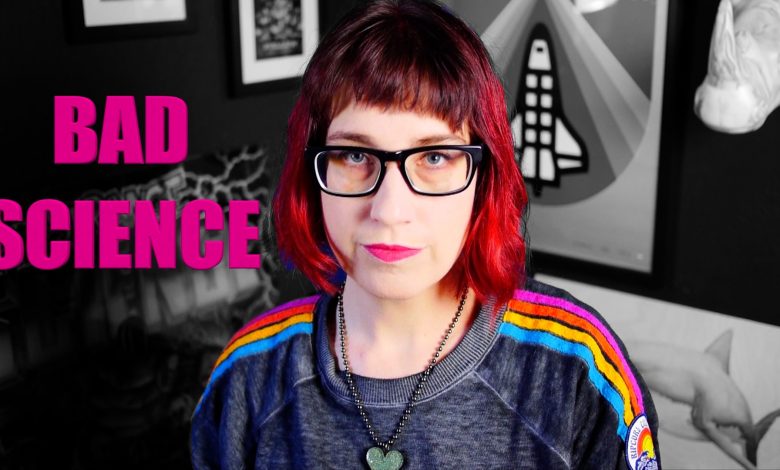Please Stop Sharing the New COVID-19 Risk Map. It’s Dangerous.

This post contains a video, which you can also view here. To support more videos like this, head to patreon.com/rebecca!
Transcript:
Scientists have been hard at work for the past year to come up with tools to help experts develop plans to mitigate the spread of COVID-19 and also to help the average person like you or me learn how to protect ourselves. A lot of great work has been done in both areas, and also there’s been a lot of absolute shit. Today I’d like to talk about the latter.
Specifically, I just saw this map via an LA Times article trumpeting the news that “Now you can see the COVID-19 risk anywhere in the country, in real time.” They even call out the fact that the map has been peer reviewed. Wow, it must be good, then, right? More data is always good, and peer review is always good, so this is absolutely a Good Thing™!
No. No no nononononono. No.
Okay, so I will concede that the map is fascinating. It is the brain child of a quantitative biologist at Georgia Tech, who then brought on an interactive computing professor at the university to build it out. It takes the known number of coronavirus cases in a particular county, multiplies it by ten because our testing and tracing in the United States is still dog shit, and then figures out the chance that an event with X number of people in that location might have at least one attendee who is positive with COVID-19.
The LA Times says that the interactive computer professor “hoped more people would use the COVID-19 Risk Assessment Planning Tool to help them make decisions about how many local friends and family to invite to their celebrations, and whether traveling to different parts of the country — or even within the same state — is worth the risk.”
My mind is blown at how incredibly irresponsible this is. Just, so, so stupid. Let me detail just a few of the reasons why.
First of all, this map isn’t even accurate. Yes, it’s updated every day with new data. But you can’t just multiply the known cases by ten and assume that’s good enough! The United States is an abject failure when it comes to testing and tracing. The simple fact is that we have no idea how many Americans have or had COVID-19. While 220,000 people were known to have died of COVID-19 by October, America had 300,000 excess deaths compared to last year. We don’t even know the true number of people who have died due to COVID, so we absolutely can’t claim to know how many people have been infected. A seroprevalence study by the CDC this past summer suggested infections were 6 to 24 times greater than known. That’s a huge fucking span! You can’t just take that and say, eh, let’s call it an even 10 and then build a tool you expect people to use to make extremely important decisions about whether they are going to help spread a pandemic or not.
Secondly, the map assumes that any event within a county only includes people from that county. For those outside the United States who don’t know counties, counties are basically ways we partition our states. My county of Alameda is fairly large but it only takes me 20 minutes to drive to three other counties, and if you give me an hour I can hit seven. My geographically closest friends are located across three counties. If we all got together, you would need to take the data from all those places when calculating risk. That is, if you had accurate data in the first place. Which you don’t.
Third, even if all the data was accurate, more information is not always a good thing for the average person. This is something I’ve talked about in the past, particularly regarding ventures like 23 and Me. Genetic testing is fascinating and I’m glad I did it, but it’s not for everyone — you can’t just tell the average person they have an increased risk of breast cancer or Alzheimer’s and expect them to fully understand their actual vs relative risk, the impact of environmental vs genetic factors, and the benefits of not panicking. You’re going to unnecessarily worry a lot of people, and let a bunch of other people think that they never have to worry about a particular disease because they have “good” genes. “Fuck it, who needs a mammogram? I don’t have that specific BRCA mutation, I’m good.” It’s dangerous!
And that’s why this tool is dangerous, too. Even if the data was correct, you can’t just tell people that if they go to a 15-person indoor Thanksgiving dinner there’s, say, a 5% chance that one of the other partygoers will be positive with coronavirus. 5% sounds super low, but if 20 people use that tool and decide 5% isn’t that big of a deal, now you have a really, really good chance that at least one 15-person dinner is going to happen with a COVID-19 patient. And eating inside with people you aren’t quarantined with is one of the easiest ways to spread COVID-19, so congratulations, you may have just started an outbreak. Because after Thanksgiving is Friendsgiving, so each of those 15 people may decide to take another 5% risk, because after all what’s 5%? That’s nothing! And now you have new people being exposed. And after Friendsgiving is the White Elephant. Another 5%? Psh, no problem. And then there’s Christmas. And then New Year’s. And that, my friends, is why this is a pandemic: it spreads exponentially. And that’s why no matter what your personal risk is, the safe, sane, healthy, compassionate thing to do for all of humanity is to STAY THE FUCK HOME.




